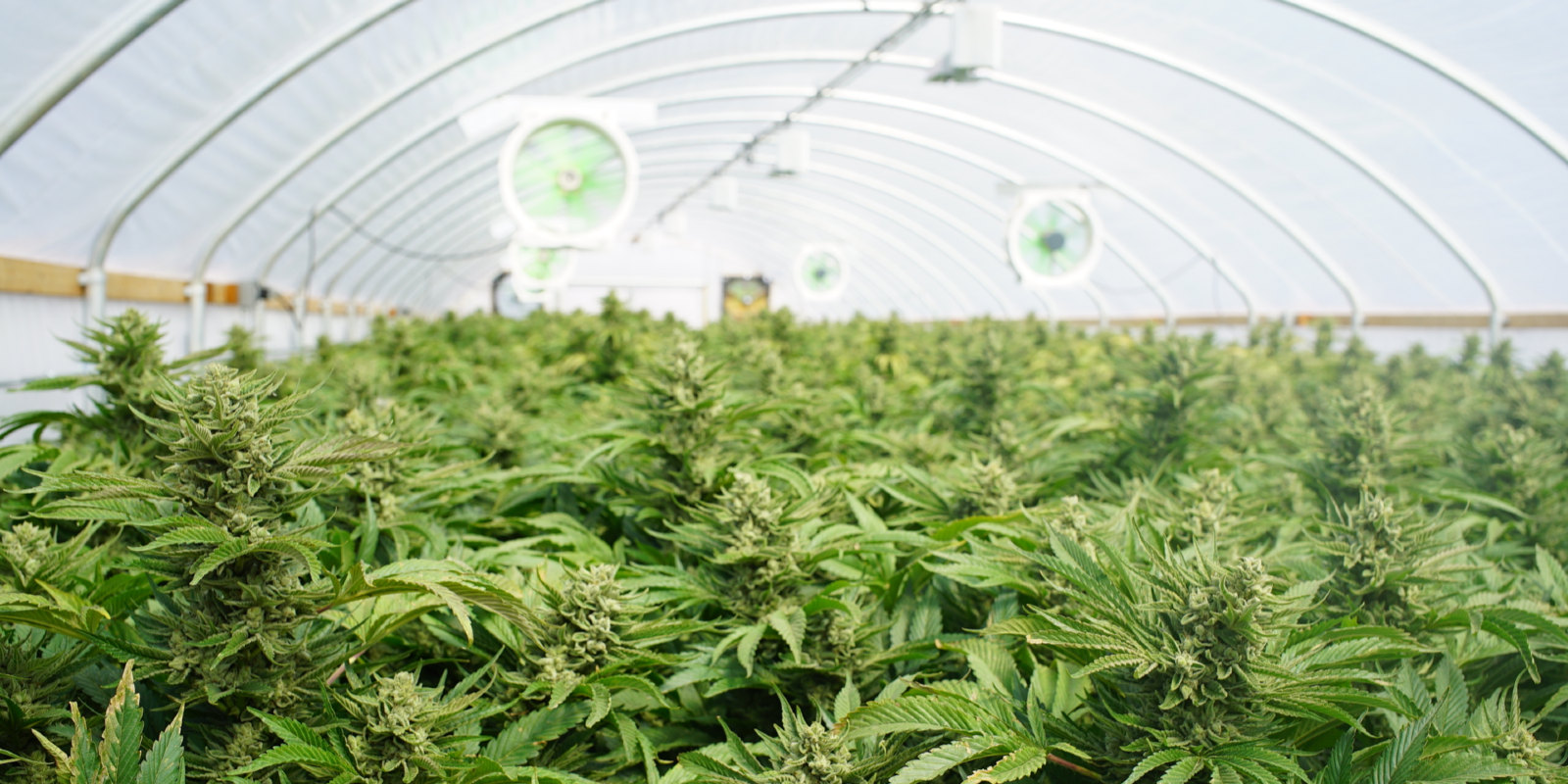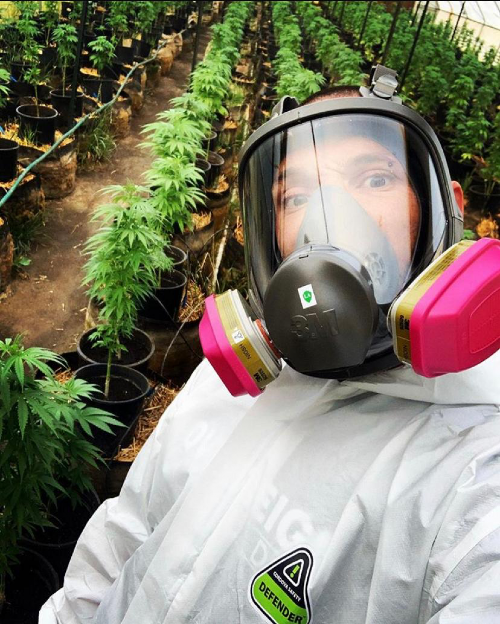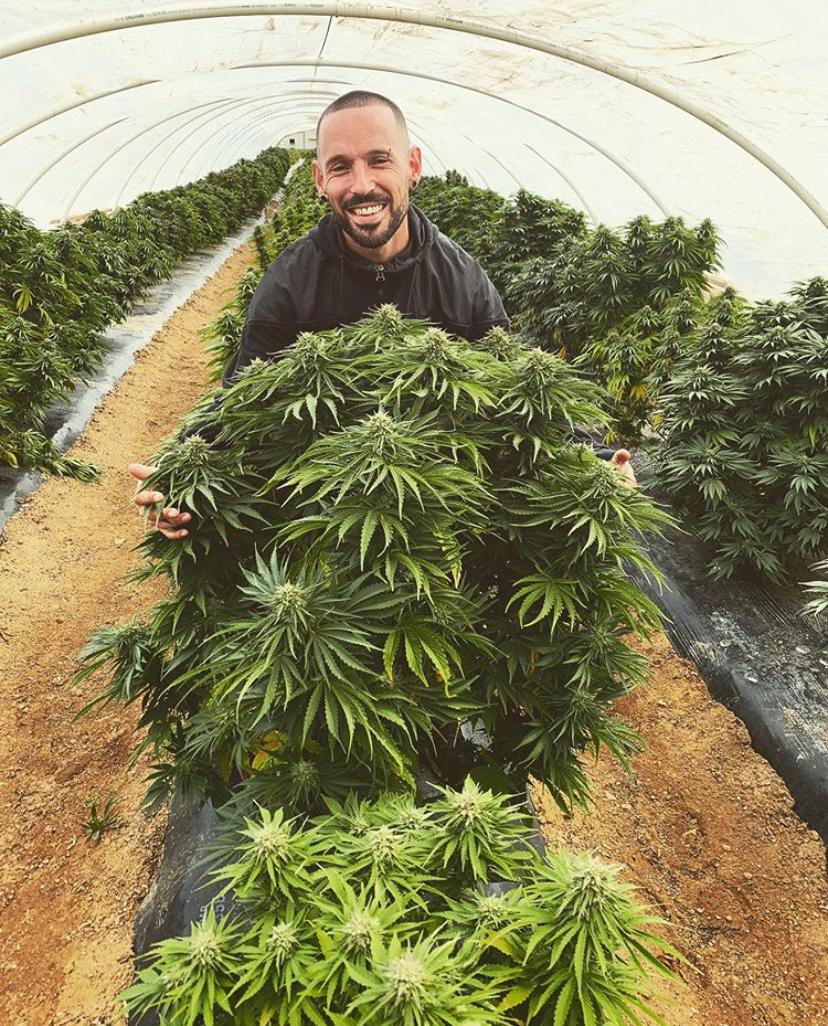- If there’s a country where the cannabis industry is evolving in leaps and bounds, it’s got to be the United States of America.
- With its changing legal framework and a strong cannabis community that has been driving the sector since the 1970s, the USA has become a worldwide reference for both cannabis quality and innovation.
- In the last two years, there have been great advancements in the professionalisation of large-scale cannabis production, as our collaborator Jose DT explains in this post.

Legal context
In 1996 the state of California was the first US state to regulate the sale and use of cannabis for therapeutic purposes. This created a slow but relentless ripple effect, with other states following the steps of California thereafter. Currently 11 states have legalised recreational marijuana, and 33 have authorised its use for medical purposes. Even though there has still been no progress at federal level concerning the legalisation of recreational and therapeutic marijuana, there is already some legislation regarding the industrial use of cannabis, commonly known as hemp. For producers of this type of cannabis this has resulted in a situation of full legality across the whole country.
The Agriculture Act of 2014, or 2014 U.S. Farm Bill, which was passed during Barack Obama's presidency, authorised the use of industrial variants of cannabis for research programs. It became the first bill to open a small gap in the rigid prohibition of cannabis at federal level in the USA. Nonetheless, cannabis was kept on the List 1 of controlled substances, together with heroin, cocaine, and methamphetamines. Therefore, industrial cannabis cultivation without a research licence was still considered a criminal offence. But the Agriculture Act of 2018, or 2018 U.S. Farm Bill, which was passed during Donald Trump's current presidency, approved the legalisation of industrial cannabis at federal level, thereby moving cannabis from the List 1 of banned substances to having a legal status, which in turn permits its cultivation at national level.
However, the regulation of CBD-based food and cosmetic products was passed into the hands of the FDA (Food and Drug Administration), a federal agency that still regards these products as illicit. This has generated totally contrasting situations in different states, with these products being more or less available depending on the state's domestic regulations, which has hindered the possibility of the development of an interstate or international trade.
Types of large-scale cannabis crops
THC flower production
This type of crop is restricted to the states where the use of recreational or medical cannabis is legal. THC farms are focused on the production of top-quality flowers with regards to both organoleptic properties and THC content. Buds are sold for smoking or are used for the production of several products, including extracts, THC-based edibles or drinks, vaping liquids, sublingual sprays, etc.
CBD flower production
This type of crop is legal across the whole country, as long as its THC levels don't exceed 0.3%. Crops are divided into two types, depending on the use given to the buds. On the one hand, there are boutique flower crops, for smoking purposes, which look for a top-quality product with high CBD levels and outstanding organoleptic properties. On the other hand, there are biomass crops, which use strains with inferior flower quality, but which are more resistant from an agricultural point of view. These varieties are more hemp-leaning and are used almost exclusively for CBD extraction.
CBG flower production
CBG strains arrived in the USA in 2019 and, even though they weren't cultivated on a large-scale during last season, they have certainly awoken a lot of interest in the sector. This is mainly due to the fact that they can be used for different applications than those of other cannabinoids, and also provide a greater control of the THC levels. Several companies have been working with these strains to get them ready for the 2020 outdoor season, when it seems that large-scale CBG production will also be on the table nationwide: most of these varieties guarantee THC levels below the legal requirement of 0.3%, so they can easily be grown within the industrial cannabis legal parameters.

Production of CBD-rich feminised seeds
The 2018 Agriculture Act approved the production of CBD-rich hemp strains at national level, which led to a high demand of high-quality feminised seeds destined for this type of crop.
Production for other industrial uses
This is hemp production for traditional industrial use, i.e. the stem fibre is used to make fabric, paper and other materials; whereas the hempseed is aimed at food use. This type of crop isn't very common in the country due to its low profitability in contrast with other legal cannabis crops.
Agronomic innovations in cannabis cultivation in the USA
Cannabis farming has experienced tremendous evolution and diversification in the last few years, especially after hemp was legalised at federal level. This legalisation led to the development of agricultural facilities which are very different from the ones that were commonly used in the past.
Old model
This includes THC farms which have been emerging in the country over the last three decades as legalisation has become a reality in different states. But there are also mountain farms, located in remote areas and with difficult access, that have existed since the days of total prohibition. They feature basic installations with a low level of technology, usually handmade PVC or wood greenhouses, or small indoor areas in garages or similar areas within the farmers' private property.
Despite legalisation, many of these farmers have kept working illegally, mainly to avoid the costs of licensing and taxes that come hand in hand with the legal status, but also partly for cultural reasons as well as for personal preference, after having lived in the world of illegality for decades.
Most farms that started operation with the arrival of legalisation have their own licence. This entails a financial cost for the licence itself, as well as further costs for the installation of perimeter security fencing, a video surveillance system, and a protocol for access control. They're generally more professional and consist of more technified greenhouses, built with galvanised iron structures, concrete floors, and climate control and support lighting systems. Many of these farms also include great indoor growing facilities, with powerful lighting and air-conditioning systems. Their work system tends to be more professional, and there's full control of all factors that influence the crop. In some cases, this type of farming has also started being used to produce high-quality CBD for the boutique flower market.
New model
Within the new generation of cannabis farms that have sprouted up as a result of the recent changes in the law for industrial cannabis, two types in particular are worth mentioning:
Open-air CBD farms
This type of farming has really thrived since the implementation of the new 2018 legislation. The licensing cost of this is ridiculous in comparison with the cost of THC production licences, which has led to the development of nationwide large-scale CBD plantations, in many cases over a hundred hectares. There are some areas, like South Oregon, where industrial cannabis has become part of the landscape, turning into the most important agricultural product of the region. This has taken US cannabis farmers down the road of the unknown: a purely agricultural approach that has brought many changes, with the most important of all being the shift to working in substrate rather than in soil. These extensive crops require the use of tractors and farming tools like subsoilers, turners and rotovators. These are essential for good preparation of the ground, which in turn prevents compaction and promotes percolation. All this work, together with some organic matter to improve texture, microbial life and nutritional content, is the basis to make all the difference to the soil quality in these farms. Another key procedure for optimum production is weed management. This is something that growers didn't have to deal with before as they used to work with substrate in closed environments. In order to control weeds, farmers normally use the most common soil cover methods in the world: black LDPE (low-density polyethylene) plastic, and dehydrated vegetable covers. Out of the two methods, plastic is the most cost-effective, but vegetable covers are more ecological: they provide organic matter and also improve root temperature and aeration. Some growers use tractors with planting tools, some of which include a device for installing the irrigation pipes underground at the same time as planting, which really accelerates the setup of the grow. However, this method is not compatible with LDPE.
Due to this lack of drying infrastructures, part of the yields were harvested late and in poor conditions, resulting in a good part of the national harvest being left uncollected in the fields.
Last year, the increase in the number of farms of this kind was sensational. According to data from Forbes, last season's national total came up to 511,442 acres (206,973 hectares) of cultivated area, which represents a five-fold rise. However, it must be noted that an important percentage of these grows developed several issues that led to a reduction of the harvest. Most problems were caused by poor management by cannabis growers with no agricultural experience, or by farmers without sufficient cannabis experience, be it theoretical or practical. In many cases, this resulted in delays in crop establishment; compaction, percolation and drainage problems due to poor soil management; nutritional and pest issues; as well as miscalculation of the drying space required. The last factor has been the most detrimental: due to this lack of drying infrastructures, part of the yields were harvested late and in poor conditions, resulting in a good part of the national harvest being left uncollected in the fields.
Despite all of this, a record harvest was achieved at national level, and it's expected that this record will continue to be beaten over the coming years due to the growing demand for CBD-rich flowers and CBD-based products.
Highly technified farms for large-scale production of CBD-rich feminised seeds
The high demand for feminised CBD-rich seeds, derived from the legalisation of industrial cannabis, led to the emergence of highly technified farms for large-scale production. These farms usually consist of indoor growing spaces, sometimes combined with greenhouses. They are highly technological, possibly being the most technified farms that have ever existed in the cannabis industry. They feature highly complex and comprehensive computer systems that can autonomously manage factors like climate, irrigation, nutrition, lighting, etc. Indoor growing spaces are often equipped with the latest lighting technology: LED, and particularly LEC (Light Emitting Ceramic) lamps, also known as CMH (Ceramic Metal Halide) lamps. In comparison with the typical High Pressure Sodium or Metal Halide systems, these lamps can reproduce the same light spectrum but reduce energy consumption and heat emissions by half.

Indoor areas are usually divided into different zones for the various phases of strain production and development, which at least include areas for conversion, characterisation, cloning, and mother plant maintenance. The working methods used are very professional and thorough, and in many cases include specific work, hygiene and security protocols. These are really important in these farms since they help set positive dynamics for early problem detection and profit maximisation.
In these farms, the number of seeds produced in each cycle is monumental. Flower processing and seed count is done using highly advanced machinery that first separates the flowers from the seeds in different processes, discarding the most unviable seeds. Afterwards, seeds are counted using machines capable of counting hundreds of thousands of seeds in minutes, with minimum margin for error. This vast-scale production makes these facilities the most lucrative of all cannabis production methods ever used. Only an independent cycle can generate several million seeds, so the yielding potential per square metre far exceeds anything previously seen in cannabis cultivation. But it does require a high level of training and professionalism, as well as a much higher investment than that of any other type of cannabis farming.
The US cannabis market has shown great adaptability. Despite having to constantly deal with the federal administration, it is moving forward step by step, managing to maintain an excellent global position and having an increasingly important place amongst the country's top agricultural products.





Comments from our readers
There are no comments yet. Would you like to be the first?
Leave a comment!Did you like this post?
Your opinion about our seeds is very important to us and can help other users a lot (your email address won't be made public).